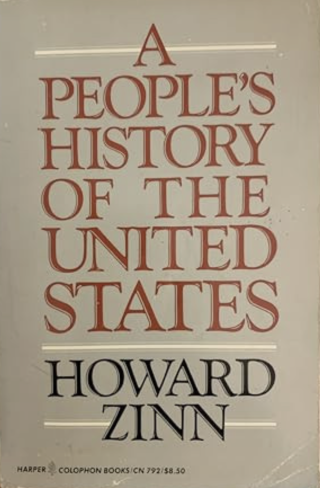In his new book Popularizing the Past, historian Nick Witham sheds light on five particularly interesting historians’ writing and publishing strategies during the mid-to-late twentieth century. He has a small but unusual cast of characters—two mainstream historians who taught at elite schools and straddled an intellectual but popular fence (Richard Hofstadter, Daniel J. Boorstin), and three radical new faces who developed new fields or, at least, new audiences (John Hope Franklin, Howard Zinn, and Gerda Lerner).
In the first group, Witham sees a genre of national popular history that draws not necessarily straight lines from politics past to present, which comes in liberal and conservative guises and is aimed at a “general” reader. (Witham acknowledges the vagueness of this category and approaches it less as a fiction than as something under construction during the postwar paperback revolution—an insight that follows from other scholarly work on the history of the book and popular culture, though usually with more attention to the whiteness and middle-classness of the phenomenon.) By contrast, Witham sees Franklin, Lerner, and Zinn speaking to or constructing an audience of “activist readers,” a mode of historical writing that persists to the present and arguably has been just as important in shaping the sense of what history can or ought to be. Indeed, by giving the majority of his pages to “activist” historians who, paradoxically or not, achieved popularity, Witham begs the question of where change comes from, in history as well as history writing.
Ultimately, Witham says, all five of his subjects were “intellectuals who created their own publics,” comparing them implicitly to today’s social media–savvy activist-scholars. Before the podcast, there were paperbacks—perhaps as democratic in effect, if not in production. (It’s much harder to get a contract with a publisher than to upload your own show on Spotify.) While acknowledging and in some cases even championing professional specialization in new fields like women’s history (Lerner) or African American history (Franklin), all of Witham’s models “showed faith in the idea that given the right support and guided by the right understanding of what made for popular history, the historical profession could produce work that would inspire everyday Americans to think differently about their nation’s past,” he writes.
The “think differently” part is essential, but so is these historians’ experience of the mid-century paperback revolution that could put their books into the hands of anyone who perused those once ubiquitous, squeaky rotating racks of little, 6” by 4” books whose pages had already turned brownish. When it came to printed history, both the student audience and the popular one seemed to be growing. These professors didn’t think their job was to conserve and re-present, much less dumb down, old understandings on cheaper paper. It was to craft and synthesize new knowledge, but in an accessible way that had political implications.

